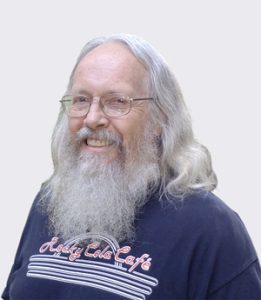Richard Nixon Comes to Montrose
Yes, it’s true! In October 1962, the future President held a campaign rally in Montrose, giving a speech before 2,000 enthusiastic locals. He was running for California governor on the Republican ticket against the Democrat incumbent Governor Brown. (For the youngsters: Governor Edmund “Pat” Brown was the father of our recent Governor Jerry Brown.) Nixon had been vice president to Eisenhower through the 1950s and had run unsuccessfully for President in 1960 against John F. Kennedy.
Nixon was on a campaign tour of the Los Angeles area on Saturday, Oct 20, 1962, and his first stop was to be Montrose at 10:30 a.m. Montrose was a friendly venue for the conservative politician. The Crescenta Valley back then leaned very far to the right and the local newspaper, the Ledger, was conservative to the extreme.
On schedule that sunny Saturday morning, Nixon’s motorcade drove down Honolulu Avenue escorted by carloads of pretty local girls who called themselves the “Nixonettes.” (Yes, these were very different times.) Also in the motorcade were several other Republican politicians. The motorcade turned south on Ocean View Boulevard and into the car lot of Ed Priester Chevrolet. In a staged area strung with red, white and blue bunting, the pretty Nixonettes shook pom-poms while Republican State Assemblyman Frank Lanterman of La Cañada entertained the crowd by playing tunes on a portable organ.

president of the Historical Society
of the Crescenta Valley and loves local history. Reach him at
lawlerdad@yahoo.com.
Before Nixon took the stage, he was warmly introduced by U.S. Congressman H. Allen Smith. H. Allen Smith was one of the more conservative members of Congress, representing California’s 43rd Congressional District for almost two decades. His voting record is most notable for his strong opposition to the Civil Rights Act and the Voting Rights Act. (In perhaps the ultimate irony, the 43rd District is now represented by Democrat Maxine Waters.)
Nixon took the stage in front of the cheering crowd and laid out his platform for governor. He led with a call for lower taxes. He felt that the high tax rate of California was driving business away (sound familiar?) and that the state of New York was attracting industry at a higher pace than California. He then advocated stricter law enforcement, including the death penalty for drug dealers.
Nixon spoke at some length about his opponent being soft on communism. Nixon had a long history of anti-communist politics during the McCarthy era. He had been an early member of the House Un-American Activities Committee, which had a role in the now infamous “Hollywood blacklist” in which entertainment figures were denied employment based only on rumors or suspicion of communist sympathies. Nixon had built his career on the pursuit of communist sympathizers, most famously in the Alger Hiss case.
In his speech in Montrose, he continued that line of thought by advocating stringent investigation of suspected communists. He specifically vowed to introduce legislation to bar the free speech on college campuses of anyone who refused to answer questions about their communist affiliations.
Nixon then took a tour of the local newspaper’s offices and printing presses. During an interview with the paper’s editor he expressed support for Max Rafferty, another very conservative public figure, who was leaving his position as head of the La Cañada School District for a successful run at the state superintendent of Public Instruction. Nixon’s “attractive and intelligent wife” Pat also showed interest in that race.
Soon after the tour, the Nixon motorcade left Montrose for its next stop in Glendale “in a wake of waving banners and pandemonium,” as the newspaper described it.
Despite Nixon’s warm reception in Montrose, he did not win that race for governor for several reasons. There was the obvious uphill battle against a relatively popular incumbent. Also, Nixon’s “communist conspiracy” platform didn’t resonate with voters. But more importantly, voters recognized that his run for governor was in fact an attempt to position himself for another run for President. After his defeat, he delivered the iconic sour grapes speech: “You won’t have Nixon to kick around anymore.” But, as most readers know, we did indeed have Nixon to kick around again in 1974 when he resigned the Presidency in the face of impeachment.
